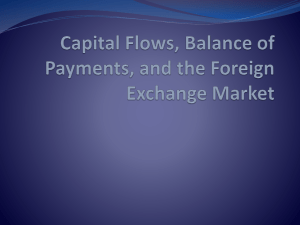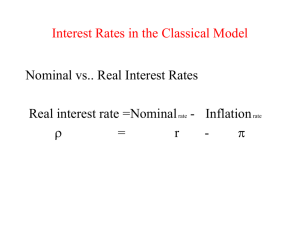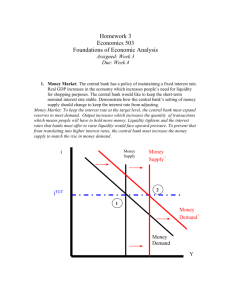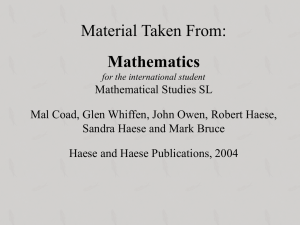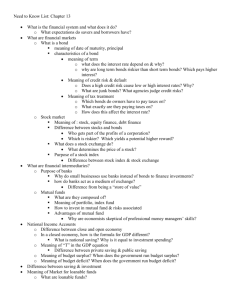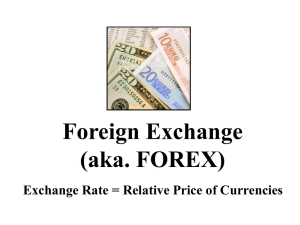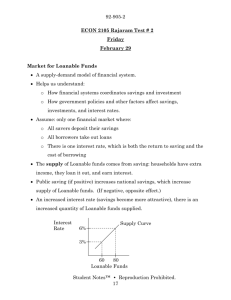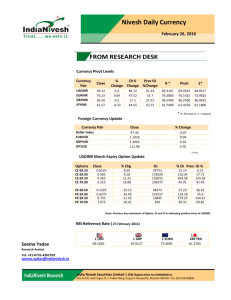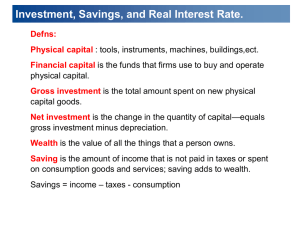Connections: Balance of Payments, Foreign Currency
advertisement
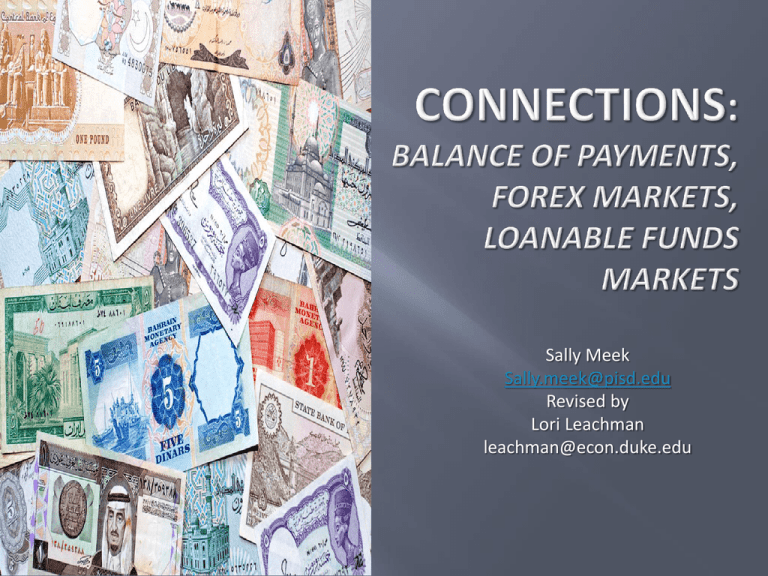
Sally Meek Sally.meek@pisd.edu Revised by Lori Leachman leachman@econ.duke.edu VII. Open Economy: International Trade and Finance Balance of Payments Accounts Foreign Exchange Market Net Exports and capital flows Links to financial and goods markets (Handout page 1) The exchange rate is the price of one country’s money in terms of another- there are 2 ways to report: E= foreign price of a dollar= #FC units/$1 e=dollar price of foreign currency=$1/#FC units Focus on money coming in as a credit (sell) and money going out as a debit (buy) – or alternatively one person’s buy is another person’s sell 2 major accounts: Current account and financial account (Handout page 2) BP = Current Account (CA) + Financial Account(FA) = 0 If BP≠0, then there is an official change in foreign currency reserves (this role of official reserves is critical in fixed exchange rate systems) so really BP= CA + FA + ∆ off reserves = 0 Current account deficits must be offset by financial account surpluses (increasing capital inflows) (CA‹0)=( FA›0) so BP=0 Current account surpluses must be offset by financial account deficits (increasing capital outflows) (CA›0) = (FA‹0) so BP=0 (Handout page 2) All transactions impact foreign currency markets of the participants – because to buy or sell foreign goods or asset you must exchange currency Financial account transactions impact the loanable funds market of the participants: Capital inflows will increase the supply of loanable funds (as foreigners buy bonds) Capital outflows will decrease the supply of loanable funds( as foreigners and domestic investors sell bonds) Department of Commerce www.bea.gov – International Transactions Examples of current articles (relatively) Bloomberg - March 19, 2009 WSJ – September 11, 2008 WSJ- Feb. 16, 2010 Balance of Payments – An Activity (Handout pages 3 – 10) 2 groups (countries) Classifying transactions as current account or financial/capital account Classifying transactions as inflows of money or outflows of money Creating forex models to illustrate transactions impact on currency value Creating loanable funds markets to illustrate impact on real interest rates from financial/capital account transactions Practice Questions: (page 11) 1. Euros/$ =E $/Euro S$ =e SEuros S1 D$ D1 Q USD increase D$=increase SFC; E rises or e falls USD appreciates and the Euro depreciates DEuros QEuros Practice Questions: (page 11) 2. S$ SGD/$ =E $/SGD S1 SSGD =e D1 DSGD D$ Q USD Increase S$ = increase DSGD; E falls or e rises USD depreciates and the SGD appreciates QSGD Practice Questions: (page 11) 3. S$ Peso/$ $/Peso SPeso S1 D1 DPeso D$ Q USD USD depreciates and the Peso appreciates QPeso Practice Questions: (page 11) 4. Yen/$ $/Yen S$ SYen S1 D$ D1 Q USD USD appreciates and the Yen depreciates DYen QYen Practice Questions: (page 11) 5. SLF Real Interest rate S1 DLF Q Loanable Funds Capital flows into the US (increased demand for dollars), increasing the supply of loanable funds and decreasing the real interest rate. The US dollar would appreciate as more dollars are demanded in order to purchase US government bonds. Practice Questions: (page 11) 6. S1 Real Interest rate SLF DLF Zambia’s Loanable Funds Market Q Capital flows out of Zambia, decreasing the supply of loanable funds and increasing the real interest rate. Zambia’s currency would depreciate as the currency is used to purchase other currencies.
